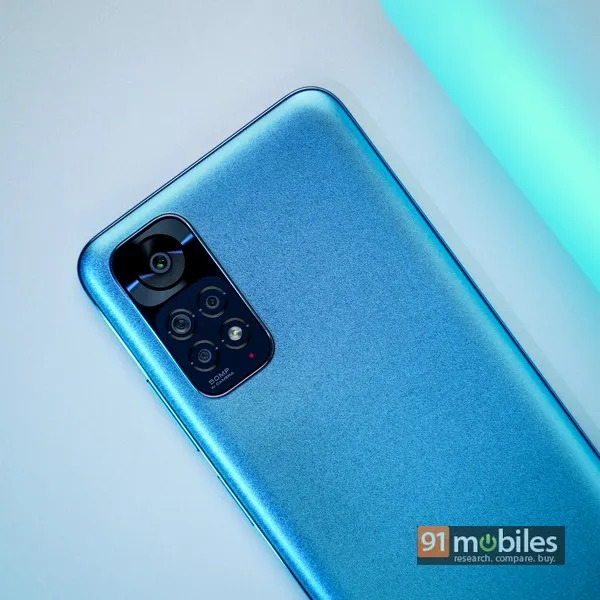
Xiaomi launched its Redmi Note 12 series in India on Thursday, including the vanilla Note 12, Redmi Note 12 Pro, and Redmi Note 12 Pro+. These smartphones offer significant improvements over their predecessors, the Redmi Note 11 series. In this article, we’ll look at four ways the Redmi Note 12 differs from the Redmi Note 11, and compare their display, chipset, camera, and launch price. With that said, let’s look at what the Redmi Note 12 brings to the table.
120Hz AMOLED display
The last year’s Redmi Note 11 packs a 6.43-inch full HD+ AMOLED panel with a refresh rate of 90Hz. A jump from 60Hz to 90Hz could be either immediately noticeable to some or not at all. In our review, we found this display produces excellent contrast and delivers rich, vibrant colours. Although the maximum brightness of 1000 nits was slightly less than its predecessor’s 1100 nits, it was readable under the harshest lights.

The Redmi Note 12, on the other hand, flaunts a more prominent 6.67-inch FHD+ display, a better Super AMOLED panel, and a smoother 120Hz adaptive refresh rate. A shift from 60Hz to 120Hz is undoubtedly noticeable — it’s twice the speed, after all — and should feel smoother than 90Hz. If the 1000nits of Redmi Note 11 — although sufficient under any lighting condition — feels downgrade from its predecessor, the Redmi Note 12 features 1200nits of peak brightness and should result in better readability than the Note 11. Stay tuned for our review of Redmi Note 12 to learn more.
New Snapdragon 4 Gen 1 chip
The last-gen Redmi Note 11 draws power from a Snapdragon 680 SoC, the default Qualcomm chipset for most midrange phones last year. In October 2022, the company launched its Snapdragon 4 Gen 1 SoC — the new go-to Qualcomm chipset for most midrange phones launching this year. The Redmi Note 12 is among the first smartphones to ship with Snapdragon 4 Gen 1 chip at the helm.
The 4 Gen 1 features two Cortex A78 cores running at 2.0 GHz and six Cortex A55 cores clocked at 1.8 GHz. On the other hand, the Snapdragon 680’s CPU architecture is four Cortex A73 cores running at 2.4 GHz and four Cortex A53 cores clocked at 1.8 GHz. Besides this, both SoCs are fabricated on a 6nm TSMC process.
The 4 Gen 1 comes with a newer Adreno 619 GPU with 128 shading units compared to the Snapdragon 680’s Adreno 610 GPU with 96 shading units. On paper, the Snapdragon 4 Gen 1 SoC looks more potent than the Snapdragon 680. As a result, it should perform better in the real world.
Apart from performance, the latest 4 Gen 1 SoC-powered Redmi Note 12 features Qualcomm’s X51 5G modem, a privilege we didn’t get with Snapdragon 680-powered Redmi Note 11, as it comes with Qualcomm’s X11 LTE modem.
Triple cameras instead of quad
Last year, the Redmi Note 11 came with a 13MP front-facing shooter and a quad rear camera setup, including a 50MP primary sensor, an 8MP ultrawide lens, a 2MP depth, and a 2MP macro unit. On the other hand, the Redmi Note 12 houses a 13MP selfie snapper and a triple rear camera setup, featuring a 48MP primary rear camera assisted by 8MP ultra-wide and 2MP macro lenses.

The company’s decision to go with a triple rear camera setup instead of a quad layout could puzzle some, while others could look at it as good riddance of the unnecessary 2MP depth sensor.
Higher starting price
The Redmi Note 12 5G comes in two variants: a 4GB / 128GB model priced at Rs 17,999 and a 6GB / 128GB model priced at Rs 19,999. Xiaomi offers an instant bank discount of up to Rs 1,500 via ICICI Bank cards or EMI. Meanwhile, the Redmi Note 11 launched in India with three storage options. The base 4GB / 64GB variant has a Rs 13,499 price tag, the 6GB / 64GB unit with Rs 14,499, and the 6GB / 128GB model with Rs 15,999.
This means that even the price of this year’s Redmi Note 12 5G’s base model is higher than the last year’s Redmi Note 11’s top-end unit.

















